Bringing a new cat home is an exciting time, but if you already have a feline overlord (or two), the introduction process can be overwhelming and stressful. With the exception of lions, cats aren’t naturally social animals, but they can learn to get along well if they’re introduced properly. Here are 17 expert tips to help you ensure the transition goes smoothly for everyone involved.
Vet Checks
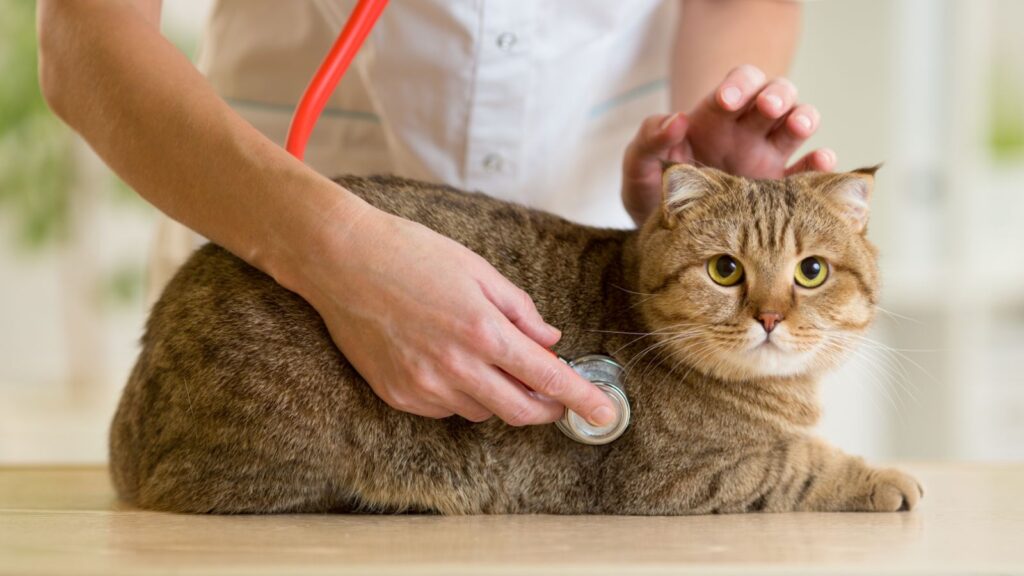
It’s an extra expense, but getting your new cat checked by a veterinarian will ensure it isn’t carrying infectious diseases that could spread to your other cat or have an underlying problem that may require extra attention or isolation. Also, ensure that all cats are fully vaccinated against preventable diseases like rabies, distemper, and feline calicivirus.
Separate Them
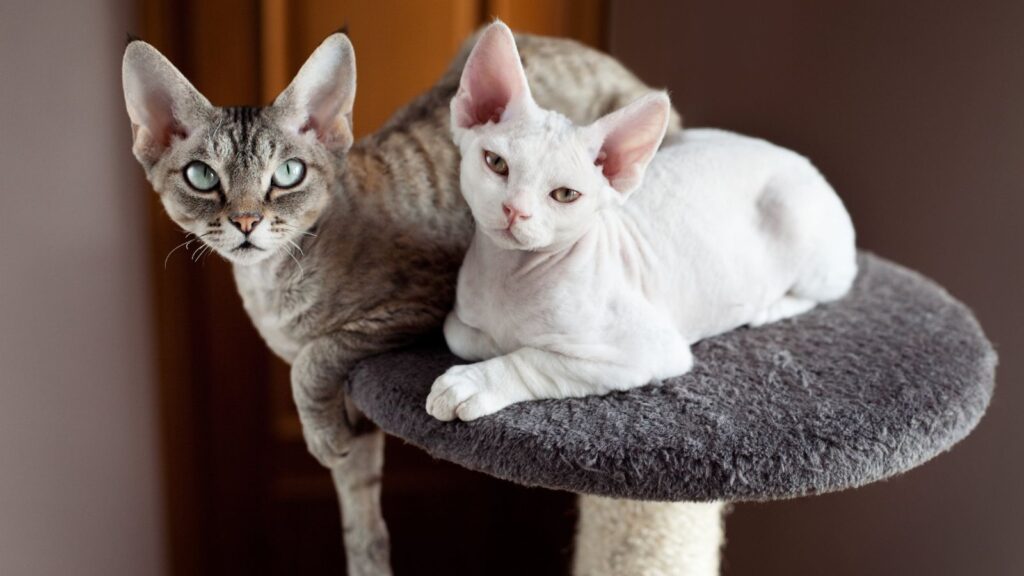
Before the big arrival, designate a room for your new kitty. PAWS Chicago advises, “Create a separate space for your new cat with a litter box, toys, water bowl, bed, and a scratching post. A spare bedroom or bathroom is perfect.” This allows the new cat to de-stress and adjust after being adopted and stops them from being stressed by suddenly having to meet resident cats.
Scent Swap
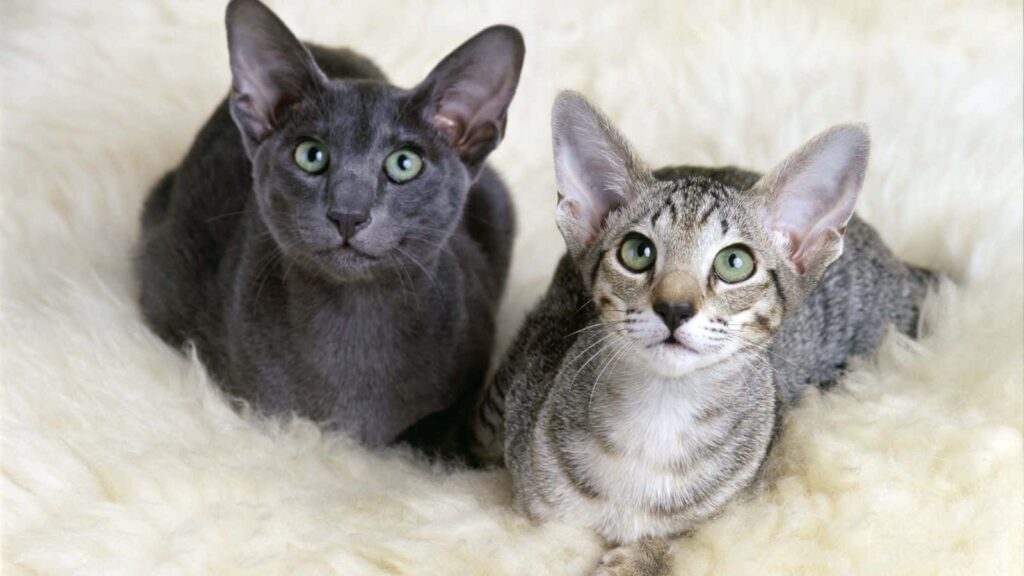
Cats rely heavily on scent to communicate and feel secure, so start by introducing their smells to each other before a face-to-face meeting. Rub a cloth on your new kitty’s face and cheeks and place it under the closed door where your resident cat can sniff it, investigate, and get used to the new pheromones. Do the same in reverse so they can both get used to each other’s scent.
Start Slow

Having a new pet can be exciting, but try to curb your enthusiasm and keep the cats separate for at least a few days, preferably for several weeks. Gauge how receptive they are to each other’s smells and don’t move to the next step until they can each sniff the other’s scent without hissing, growling, or hiding. This will ensure you don’t rush them and promote stress.
Positive Reinforcement
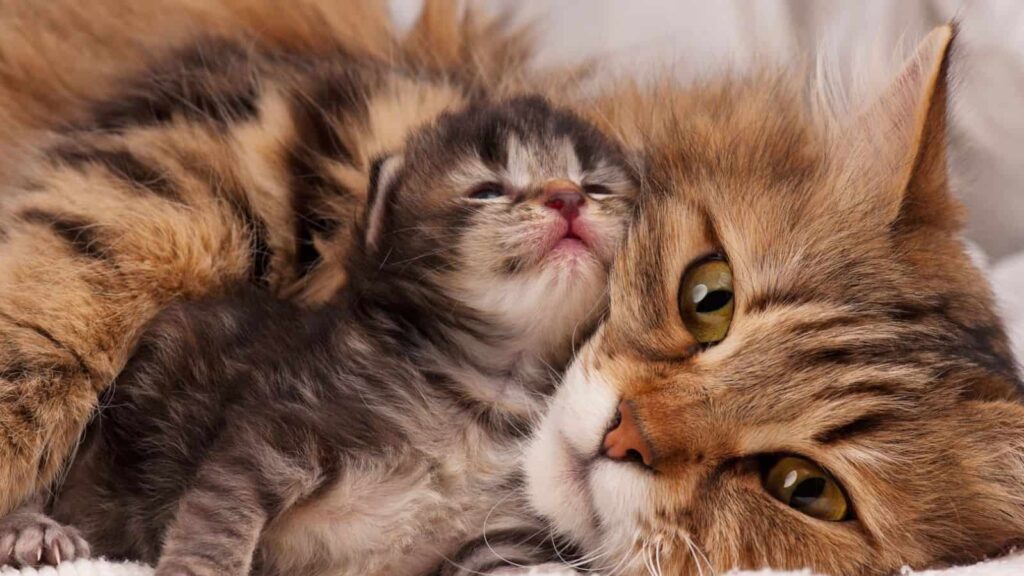
During this initial separation, shower both cats with love and attention in their own spaces. Play with your resident cat near the door or barrier, offering treats and praise whenever they are calm or curious, but don’t punish negative behaviors. Positive reinforcement helps create a positive association between the new cat’s presence and delicious or attentive rewards.
No Peeking

Jackson Galaxy asserts that, during this initial phase, there must be absolutely no visual contact between the resident cats and the newcomer. Ignoring this advice will result in negative experiences for both cats and unnecessary stress, elongating the process and potentially preventing the cats from ever tolerating one another. Keep the door closed at all times!
Shared Mealtimes

Once both cats seem to have overcome their initial cautiousness, place their food bowls on opposite sides of a closed door and try to feed them at the same times each day so they can both get used to a comforting routine. As the cats eat, they’ll start associating the positive experience of mealtime with each other’s presence.
Controlled Introductions

No matter how relaxed the cats are, never simply open the door and let them mingle. Once they seem comfortable and have stopped hissing/growling/appearing agitated, replace the door with a see-through barrier like a baby gate. Supervise these visual introductions and close the door if either cat becomes distressed. Use separate toys to play with both cats simultaneously.
Pay Attention to Body Language

Keep a close eye on both cats during these first meetings. Body language or behavior like hissing, flattened ears, dilated pupils, an arched back, and a swishing tail are all signs of stress or aggression in cats. If you see any negative body language like this, separate the cats immediately and try again later. Keep sessions short to begin with, and gradually increase their duration.
Use Neutral Territory

When introducing the cats in person for the first time, do it in a neutral space. Never place the new cat in or around the resident cat’s personal domain, like their bed, food bowl, favorite napping place, or go-to hiding spot. This can help reduce territorial instincts and create a more relaxed atmosphere by ensuring that your existing cat doesn’t feel overly possessive.
Provide Plentiful Resources

Avoiding competition is very important, and the Blue Cross recommends providing plenty of food and water bowls, litter boxes, scratching posts, toys, and beds. This will ensure that each pet has its own safe space to eat, play, and use the litter box, and it will prevent the resident cat from feeling stressed by overstretched resources that were previously adequate for its needs.
Use Vertical Space
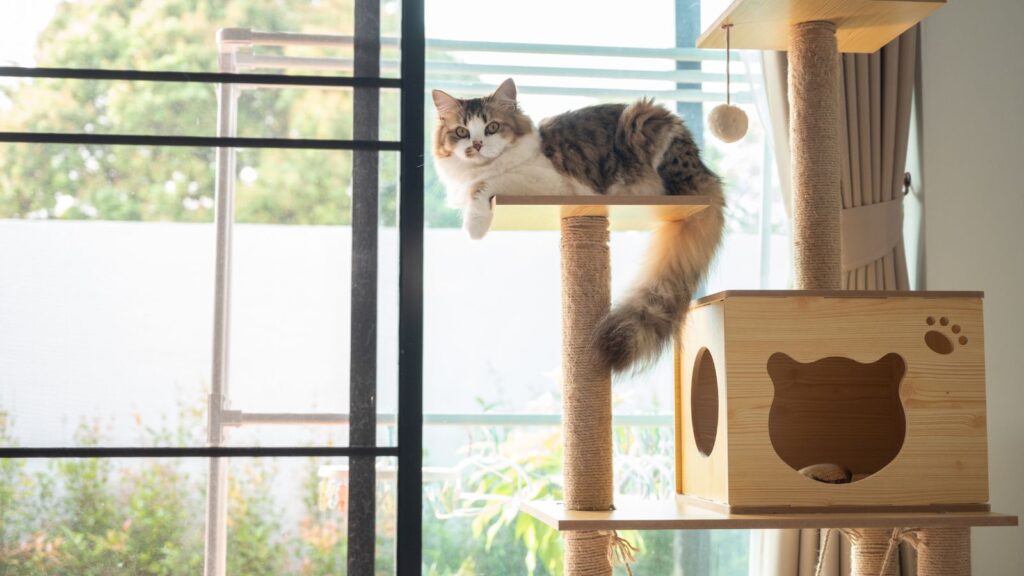
All cats love to climb, and they feel safest when they have a tall vantage point from which to observe the ‘action’ from a safe place. This is especially important when new cats are mixing with residents so they can all get some personal space when needed. Provide vertical spaces like cat trees, shelves, or climbing structures, and make sure there are enough perches for all cats.
Respect Individuality

All cats are individuals with unique personalities. Older, well-established cats may find it especially difficult to accept a lively, young kitten, and shy cats will be frightened by overly confident or playful newcomers. Don’t expect them to tolerate one another within a specific timeframe, and don’t hesitate to separate them again if either cat becomes unhappy.
Don’t Force It

Never force physical contact between the cats—this will not work and will most likely backfire, creating a negative association. Be patient and allow them to sniff each other on their own terms. Interactions born from curiosity, playfulness, or calm acceptance are far more likely to lead to a content cohabiting environment for you and your cats.
Get Professional Help
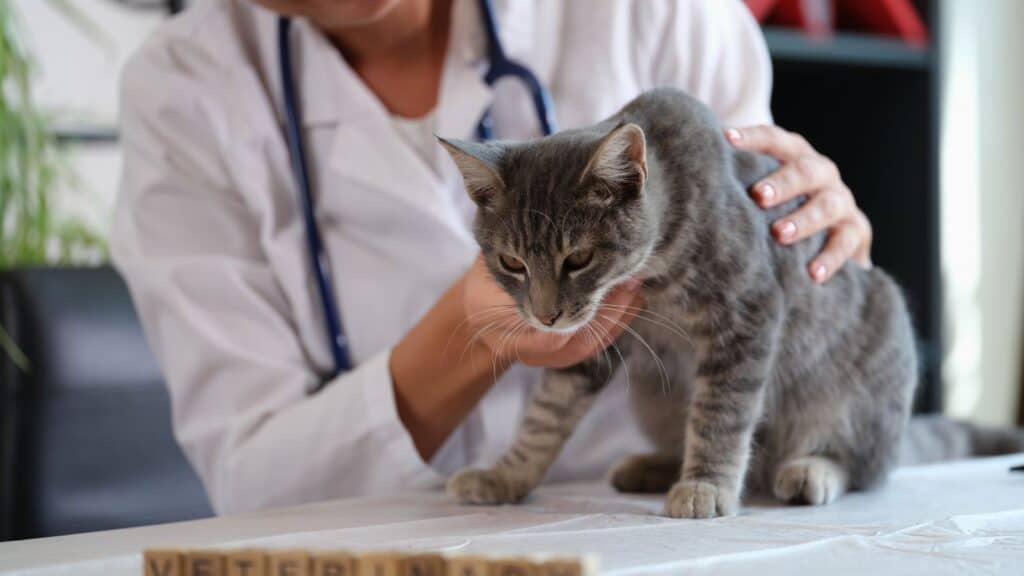
If either cat seems consistently unhappy or aggressive, even after following this advice, consider getting help from a professional cat behaviorist or the rescue center from which you adopted the new cat. Experienced people can provide valuable guidance and strategies tailored to your particular living situation and the unique personalities of the cats involved.
Don’t Forget Your Resident Cat

New cats, especially kittens, can be highly entertaining, playful, and cute, but try not to forget about your existing pets. If you spend all your time focusing on the newcomer, your resident cat will feel maligned and neglected. Make sure you spend time with existing cats, giving extra cuddles, playtime, or treats to reinforce your bond and prevent them from feeling ‘replaced.’
Be Patient

Some cats will become best buddies in weeks, while others will take months to barely tolerate each other. Be patient and allow them to acclimate to their new housemates in their own time. The RSPCA admits that, in some rare instances, the cats are simply incompatible, and you may have to consider rehoming the newcomer to prevent stress and unhappiness for resident cats.
Up Next: 17 Phrases Older People Use That No One Else Gets

Each and every generation has its own phrases and sayings that separate it from the rest, and the boomers certainly have plenty. Discover 17 popular boomer phrases that aren’t often used today and what they mean. Maybe you’ll want to bring some of them back!
17 Phrases Older People Use That No One Else Gets
People Who Don’t Show Empathy Usually Have These 18 Traits

The world would be a better place if everyone had a little more empathy. But sadly, in reality, some people show much less empathy than we’d like. Here are 18 traits of people who don’t show empathy.
People Who Don’t Show Empathy Usually Have These 18 Traits
The 17 Unhappiest States in America

The US has hit an all-time low position in the World Happiness Index, tumbling to 23rd in 2024. However, it’s important to remember that location is an important factor; many US states are very happy, unlike the following 17 US states that appear to be the most unhappy.

